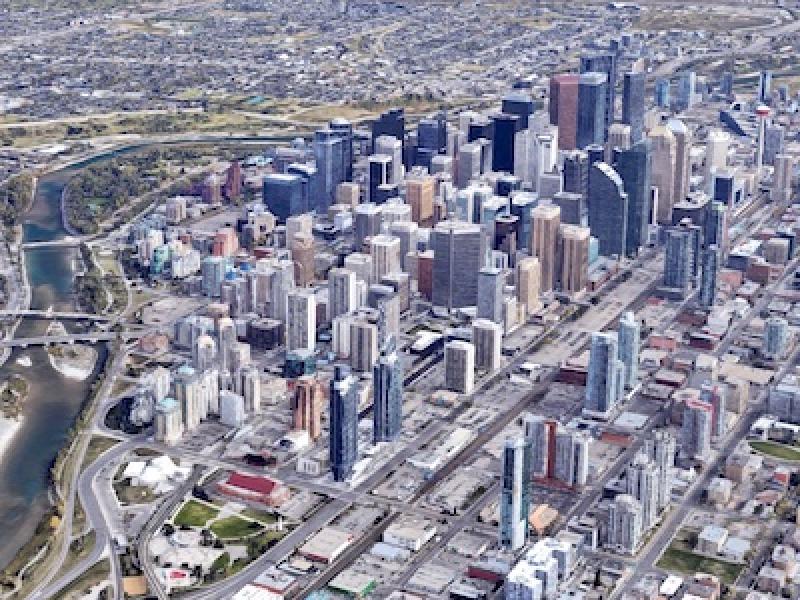
A "tidal wave" of new buildings is expected to come onto the Calgary industrial real estate market in 2023 to meet the burgeoning demand for space in the region.
Research by commercial real estate firm Colliers indicates there is 4.7 million square feet of speculative development under construction in the Calgary area.
Paul Marsden, executive vice-president and partner of industrial sales & leasing with Colliers, said the spec development activity entices new entrants into the market and pre-leasing activity.
Marsden, speaking at the Calgary Real Estate Forum, said leasing rates in the area remain well below other major Canadian cities, but most industry experts anticipate increases throughout 2023.
Colliers’ research shows the average asking net rental rate for Calgary was $11.65 in the third quarter. It was $20.44 for Vancouver, $16.78 for Toronto, $14.67 for Montreal and $14.77 for Ottawa.
The push factors for Calgary's growth
“The warehouse and logistics sector is driving the highest amount of volume, large spaces, and lots of them,” Marsden said. “This is primarily to support regional distribution (Western Canada), but a common theme we hear about is housing more inventory domestically for both retailers, suppliers and manufacturers.
"By housing more inventory in more places, outside of one market in Canada, it reduces supply-chain risk and at the current time offers a discounted real estate environment to do so."
He also mentioned the increasing relevance of e-commerce and how he expects a "robust group of local and regional businesses" to continue to service the greater Calgary area while groups drive absorption, rental rates and new spec development.
Marsden said the Calgary area is attractive because it has available land for the industrial market.
“We have an abundance of land zoned for, or planned for, industrial development. In addition, we have a robust and sophisticated development community who has access to large capital stacks and who all believes in the 'Western Canadian Distribution Centre of Canada' concept that Calgary provides,” he said.
“In addition we have two municipalities (Calgary and Rocky View County) who see industrial real estate as a growth area and who are both making development approvals easier and quicker. Wheatland County is also making a push in the same areas.
"While these are all real estate-related reasons, they are supported by the supply-chain fundamentals including our geographical location, access to a large population base within a one day’s drive, invested infrastructure, roadways/intermodal/airport, a robust labour force and all in a cost-effective environment.”
Calgary's strong fundamentals
According to Colliers, the Calgary-area industrial real estate market has grown to 165.6 million square feet as of Q3 2022, up from 153.5 million square feet one year ago. The vacancy rate sits at 2.21 per cent with 10.9 million square feet of positive absorption year-to-date.
“For us, you’re either in the market or you’re not and we choose to be in,” said Sean Day, vice-president of industrial at Vancouver-based Anthem Properties. "In doing that, you always accept that there’s going to be some level of volatility and some level of challenge, but we choose to be in, in the corners fighting for it.”
Also at the Calgary forum, Dominic Bonin, vice-president of commercial asset management at Skyline Industrial REIT, said there are opportunities in Calgary to reach the level of rents experienced in other major markets.
“Maybe not tomorrow . . . The demand is here. The rent growth is here,” he said.
Mark Edwards, development manager of Panattoni Development Company, told forum attendees the city and area has had “fantastic” absorption in the last few years as lease rates are pushing up.
“The fundamentals of Calgary are still very strong. There’s a great sound bite in the quarterly report that came out from JLL just recently that said if every building that’s currently approved or under construction was to be delivered vacant we would still only be at 4.9 per cent vacant,” Edwards noted.
In its report, JLL forecast 5.8 million square feet of speculative industrial inventory will be completed by the end of 2023.
“If we assume that not a single square foot of that speculative space is leased or occupied upon completion (which is extremely unlikely as numerous pre-lease deals are proceeding), vacant space would increase to 8.3 million square feet in a market of 168.4 million square feet, thus increasing the vacancy rate to 4.9 per cent,” said the JLL report.
It continued: “This is more in line with a balanced market which we see as overall vacancy between four per cent to five per cent. However, it is likely that at least 50 per cent of this inventory will be leased upon completion.
"If this assumption is accurate, vacancy will only increase to 3.1 per cent, which means that the industrial market is very likely to remain competitive into 2024.”
The industrial space "pressure release valve" for Canada
The JLL report said 7.6 million square feet of speculative construction completions are planned for 2024, which is likely the year a balanced market will prevail.
Marsden said in the short to medium terms Calgary is the “pressure release valve” for industrial space in Canada.
“We’re seeing a lot of great activity. The most important thing for me is seeing new activity. New occupants are coming into the Greater Calgary Region.
"We talk a lot about the existing occupiers who have done a great job of growing their footprint here and servicing the supply chain networks, but we’re really starting to see an influx of new occupiers,” he said.
“We’re at the tip of the iceberg there. We’re really starting to see that geographical dispersement of supply chain networks. . . . As opposed to servicing Canada from one location in Eastern Canada, you’re really looking at two, three, four locations.
". . . Smaller footprints but strategically located to get away from impacts and that could be labour issues, or rail issues, or natural disasters taking place, all of which has resulted in a lot of retailers losing out on sales and not hitting the target as a result of not getting products to the shelves.”










